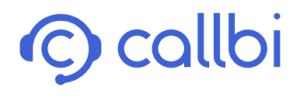Average handle time (AHT) remains a vital metric for contact managers looking to optimise their operations.
Traditionally, measuring AHT posed significant challenges for contact centre managers. However, the introduction of speech analytics introduced a simple, but very insightful, method of monitoring this metric.
In this exploration, we will be unpacking the traditional AHT measurement methods and contrasting them with the current innovative approach of speech analytics. The aim is to show how this new method results in tangible benefits for contact centres.
The Traditional Way to Approach AHT
Traditional methods of measuring AHT were lengthy, not automated and did not account for all data drawn in from calls. Let’s delve into what traditional methods were all about:
- Manual Calculation: AHT has often been calculated manually, with agents or supervisors tracking the time taken to handle customer inquiries. This process is not only time-consuming but also prone to inaccuracies.Think of a customer service hotline at an electronics store. Agents track call times manually. If a call takes 30 minutes, but only 15 minutes are logged due to manual errors, the Average Handle Time appears better than it is. This method leads to inaccurate data and may misguide management decisions, causing potential service issues due to misallocation of resources.
- Limited Context: Traditional AHT measurements typically provide limited context. They focus solely on the time spent on a call, often overlooking the complexity and effectiveness of the interaction. Imagine a customer calling a computer support hotline. The call lasts for 15 minutes, but the traditional AHT measurement only considers the time. In reality, the customer had two problems, one of which was resolved, and the other was hurriedly addressed. Traditional measurements miss this detail, making the call seem efficient when in fact, important issues were left unresolved due to time constraints.
- Reactive Response: In the traditional approach, AHT is used reactively, with contact centre managers responding to fluctuations after they occur rather than proactively addressing inefficiencies. At a customer service centre for a mobile phone company, a caller reports a billing issue. The call lasts 15 minutes. Traditional AHT only focuses on this time without considering that the problem wasn’t completely fixed during the call. The customer might have to call again, making the service less effective. Traditional AHT misses this, giving an incomplete view of the customer interaction.
- Incomplete Data: Traditional AHT calculations often fail to capture the entirety of customer-agent interactions. This can lead to inaccuracies and missed opportunities for optimization. Think of a customer calling a helpline to fix a problem with their computer software. The call takes 30 minutes, but traditional AHT only counts the call duration. It misses the fact that the problem wasn’t fully resolved. The customer might need to call again, leading to a less efficient service. Traditional AHT overlooks this, making it harder to improve the customer experience.
Pain Points of Traditional Methods
Contact centre managers have faced several challenges with traditional AHT measurement methods. These include:
- Inaccurate Metrics: Manual AHT calculations can result in inaccuracies and inconsistencies, making it difficult to rely on the data for making informed decisions.
- Lack of Visibility: Traditional AHT measurements provide limited visibility into the factors affecting AHT. Managers often lack insights into the root causes of prolonged handling times.
- Missed Efficiency Gains: The limitations of traditional AHT tracking meant that opportunities for efficiency gains were frequently missed. Managers struggled to identify trends and patterns that could lead to streamlined processes.
- Customer Satisfaction Concerns: Efforts to reduce AHT sometimes led to customer satisfaction concerns, as agents rushed through interactions, potentially compromising service quality.
The Benefits of Using Speech Analytics
Speech analytics technology has revolutionised the measurement of AHT in contact centres, offering a number of benefits:
- Automated Data Collection: Speech analytics automates the data collection process by capturing and analysing customer interactions in real-time. This technology can accurately determine the precise AHT for each interaction.
- Comprehensive Insights: By analysing speech patterns, keywords, sentiment, and other data points, speech analytics offers comprehensive insights into customer-agent interactions. It can identify areas for process optimization and efficiency improvements.
- Real-time Monitoring: Speech analytics provides real-time monitoring of AHT, allowing contact centre managers to detect and address issues as they occur, thereby optimising handling times proactively.
- Proactive Optimization: Armed with real-time data and insights, contact centre managers can take a proactive approach to optimising AHT. They can identify bottlenecks and implement process improvements in real-time.
- Better Customer Experience: Speech analytics ensures that AHT improvements do not compromise the quality of customer interactions. This aligns efficiency gains with customer satisfaction, leading to a better overall customer experience.
- Enhanced Visibility: Speech analytics provides enhanced visibility into the factors affecting AHT, allowing managers to make data-driven decisions and allocate resources more effectively.
Final thoughts
The transformation from traditional AHT measurement methods to speech analytics represents a significant leap forward for contact centres. Speech analytics offers managers a more accurate, insightful, and proactive approach to tracking AHT, effectively addressing pain points associated with manual calculations.
With speech analytics, contact centres can enhance efficiency, customer satisfaction, agent performance and ultimately, achieving their goals more effectively in the ever-competitive realm of customer service. The future of AHT measurement is data-driven, responsive, and customer-centric, thanks to the power of speech analytics.
As the contact centre landscape continues to evolve, the adoption of speech analytics is poised to play a pivotal role in creating data-driven, responsive, and customer-centric customer service operations. If you want to learn more about how Callbi Speech Analytics can help your contact centre achieve 100% call coverage and insights, please contact us for more information or a demo.

